|
Kingdom of Galicia and Lodomeria Królestwo Galicji i Lodomerii House of Habsburg-Lorraine The
Kingdom of Galicia and Lodomeria was a crownland of the Habsburg Monarchy, the Austrian Empire, and Austria-Hungary from 1772
to 1918. This historical region in eastern Central Europe is currently divided between Poland and Ukraine. The nucleus of
historic Galicia currently consists of the Lviv, Ternopil and Ivano-Frankivsk regions of western Ukraine. In 1772, Galicia
was the largest part of the area annexed by Austria in the First Partition of Poland. As such, the Austrian region of Poland
and what was later to become Ukraine was known as the Kingdom of Galicia and Lodomeria to underline the Hungarian claims to
the country. However, after the Third Partition of Poland, a large portion of ethnically Polish lands to the west (New or
West Galicia) was also added to the province, which changed the geographical reference of the term, Galicia. Lviv (Lemberg)
served as capital of Austrian Galicia, which was dominated by the Polish aristocracy, despite the fact that the population
of the eastern half of the province was mostly Ukrainian, or "Ruthenian", as they were known at the time. In addition
to the Polish aristocracy and gentry who inhabited almost all parts of Galicia, and the Ruthenians in the east, there existed
a large Jewish population, also more heavily concentrated in the eastern parts of the province. 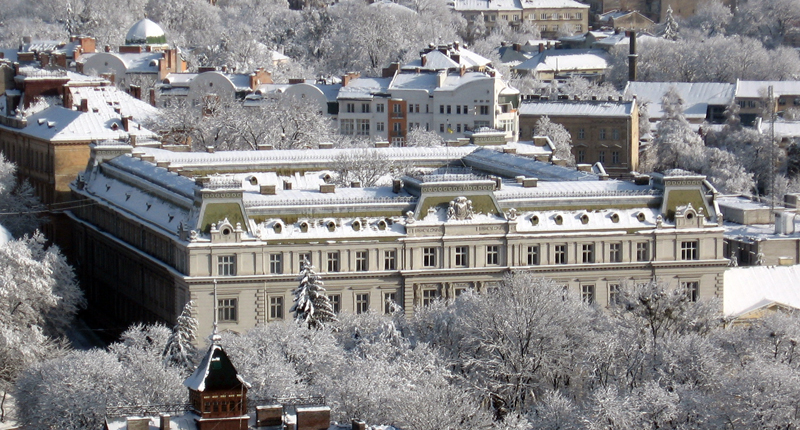
During the first
decades of Austrian rule, Galicia was firmly governed from Vienna, and many significant reforms were carried out by a bureaucracy
staffed largely by Germans and Germanized Czechs. The aristocracy was guaranteed its rights, but these rights were considerably
circumscribed. The former serfs were no longer mere chattel, but became subjects of law and were granted certain personal
freedoms, such as the right to marry without the lord's permission. Their labour obligations were defined and limited, and
they could bypass the lords and appeal to the imperial courts for justice. The Eastern Rite "Uniate" Church, which
primarily served the Ruthenians, was renamed the Greek Catholic Church to bring it onto a par with the Roman Catholic Church;
it was given seminaries, and eventually, a Metropolitan. Although unpopular with the aristocracy, among the common folk, Polish
and Ukrainian/Ruthenian alike, these reforms created a reservoir of good will toward the emperor which lasted almost to the
end of Austrian rule. At the same time, however, Austria extracted from Galicia considerable wealth and conscripted large
numbers of the peasant population into its armed services. 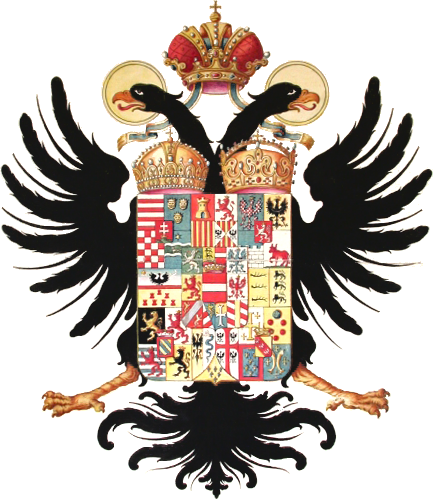 Demographics of the
Kingdom
In 1773, Galicia had about 2.6 million inhabitants in 280 cities and markets and approx.
5,500 villages. There were nearly 19,000 noble families with 95,000 members (about 3% of the population). The "non-free"
accounted for 1.86 million, more than 70% of the population. A small number were full farmers, but by far the overwhelming
number (84%) had only smallholdings or no possessions. No country of the Austrian monarchy had such a varied ethnic mix as
Galicia: Poles, Ruthenians, Germans, Armenians, Jews, Hungarians, Roma peoples, Lipowaner, etc. The Poles were mainly in the
west, with the Ruthenians predominant in the eastern region ("Ruthenia").
The Jews of Galicia had immigrated
in the Middle Ages from Germany and mostly spoke Yiddish as their first language. German-speaking people were more commonly
referred to by the region of Germany where they originated (e.g. Saxons or Swabians). With inhabitants who had a clear difference
in language such as with the Saxons or the Roma identification was less problematic, but widespread multilingualness blurred
the borders again. It is however possible to make a clear distinction in religious denominations: the majority of the Poles
were Latin Catholics, while the Ruthenians were mostly Greek Catholics. The Jews, who represented the third largest religious
group, were mostly of the Orthodox variety. The average life expectancy was 27 years for men and 28.5 years for women, as compared to
33 and 37 in Bohemia, 39 and 41 in France and 40 and 42 in England. Also the quality of life was much lower.The yearly consumption
of meat did not exceed 10 kilograms per capita, as compared to 24 kg in Hungary and 33 in Germany. This was mostly due
to much lower average income. In 1888 Galicia had 78,550 km² of area and was populated by ca. 6.4 million people,
including 4.8 million peasants (75% of the whole population). The population density was 81 people per square kilometre
and was higher than in France (71 inhabitants/km²) or Germany. 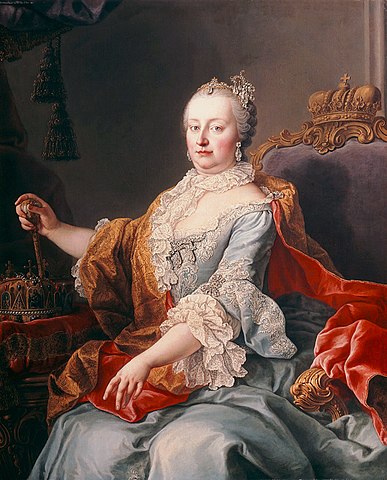
List of the
Monarchs of Galicia and Lodomeria 1772-1918 1740-1780
with Francis I Stephen (1740-1765)
Joseph II (1765-1780) | 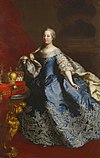 | 13 May 1717
Hofburg Imperial
Palace
eldest daughter of Charles III and Elisabeth Christine of Brunswick-Wolfenbüttel |
Vienna
12 February 1736
sixteen
children | 29 November 1780
Hofburg
Imperial Palace
aged 63 | Francis I Stephen
with Maria Theresa (1740-1765) | 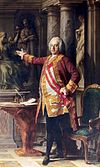 | 8 December 1708
Nancy
fourth son of Leopold, Duke of Lorraine and Élisabeth Charlotte d'Orléans |
18 August 1765
Innsbruck
aged
56 |
Joseph II
1765-1790
with Maria Theresa (1765-1780)
| 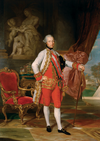 | 13 March 1741
Vienna
eldest son of Francis I Stephen and Maria Theresa | (1) Isabella of Parma
Vienna
6 October 1760
two daughter
(2) Maria Josepha of Bavaria
Schönbrunn
23 January 1765
no issue |
20 February 1790
Vienna
aged
48 | Leopold
XIII
1790-1792 |  | 5 May 1747
Vienna
third son of Francis I and Maria Theresa | Maria
Luisa of Spain
Innsbruck
16 February 1764
sixteen children | 1 March 1792
Vienna
aged 44 |
Francis I
11 August 1804-1835 |  | 12 February 1768
Florence
eldest son of Leopold XIII and Maria Luisa of Spain | (1) Elisabeth of Württemberg
Vienna
6 January 1788
one daughter
(2) Maria Theresa of Naples and Sicily
Vienna
15 September 1790
12 children
(3) Maria Ludovika of Austria-Este
Vienna
6 January 1808
no issue
(4) Caroline
Augusta of Bavaria
Vienna
29 October 1816
no issue | 2 March 1835
Vienna
aged 67 |
Ferdinand I
1835-1848 |
 | 19 April 1793
Vienna
eldest son of Francis II and Maria Theresa of Naples and Sicily | Maria Anna of Savoy
Vienna
27 February 1831
no issue |
29 June 1875
Prague
aged 82 |
Francis Joseph I
1848-1916 |
 | 18 August 1830
Schönbrunn
Palace
eldest son of Archduke Franz Karl of Austria and Princess Sophie of Bavaria |
Elisabeth of Bavaria
Augustinerkirche
24 April 1854
four children | 21
November 1916
Schönbrunn Palace
aged 86 | Charles I
1916-12 November 1918 | 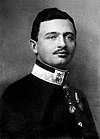 | 17 August 1887
Persenbeug-Gottsdorf
eldest son of Archduke Otto Francis of Austria and Princess Maria Josepha of Saxony | Zita of Bourbon-Parma
Schwarzau Castle
21 October 1911
eight children | 1 April 1922
Madeira
aged 34 | Heads of the Habsburg Family - since
1922 | Portrait | Name | Head
of the family from | Head
of the family until |
|---|
 | Otto von Habsburg | 1 April 1922 | 1 January 2007 (resigned) † 4 July 2011 | 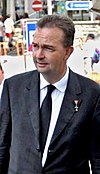 | Karl von Habsburg | 1 January 2007 | Incumbent |
The House of Habsburg-Lorraine The House of Habsburg or Hapsburg (also known as House of Austria) was one the most important royal houses
of Europe and is best known for being an origin of all of the formally elected Holy Roman Emperors between 1438 and 1740,
as well as rulers of the Austrian and Spanish Empires and several other countries. Originally from Switzerland, the dynasty
first reigned in Austria, which they ruled for over six centuries. A series of dynastic marriages brought Burgundy, Spain,
Bohemia, Hungary, and other territories into the inheritance. In the 16th century the family separated into the senior Habsburg
Spain and the junior Habsburg Austrian branches. 
As royal houses are by convention
determined via the male line, the reigning branches of the House of Habsburg became extinct in the 18th century. The Spanish
branch ended upon the death of Charles II in 1700 and was replaced by the Anjou branch of the House of Bourbon in the person
of his great-nephew Philip V. The Austrian branch became extinct in 1780 with the death of the Empress Maria Theresa and was
replaced by the Vaudemont branch of the House of Lorraine in the person of her son Joseph II. The new successor house styled
itself as the House of Habsburg-Lorraine (German: Habsburg-Lothringen), therefore technically there is not a House of Habsburg
in the present day but only a female Habsburg line that exists in the House of Lorraine known as the House of Habsburg-Lorraine. 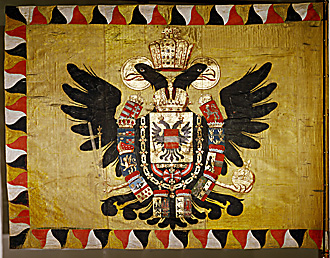
Titles and Styles of The Imperial
and Royal House The
members of this family bear the titles "Archduke (Archduchess) of Austria, Prince (Princess) of Hungary and Bohemia",
Prince or Princess of Galicia and Lodomeria and the style of "Imperial and Royal Highness". Descendants of morganatic
marriages, other than those granted specific titles (e.g., the Grafen von Meran and the Princes von Altenburg and Hohenberg)
generally bear the title "Graf (Gräfin) von Habsburg-Lothringen", or at least the surname "Habsburg". Genealogy
of the Imperial and Royal House Part: I Maria Theresia, Archduchess of Austria, daughter of Emperor Karl VI, was b.Vienna 13 May 1717; she succeeded
her father as Queen of Hungary and Bohemia and heiress of Austria on his death in 1740; she d.at Vienna 29 Nov 1780; she had
married at Vienna 12 Feb 1736 Francis Stephen, Duke of Lorraine (Lothringen) (Lunéville 8 Dec 1708-Innsbruck 18 Aug
1765), who in 1745 became the Emperor FRANZ I. Their issue:
1a) Marie
Elisabeth Amalie Antonie Josephe Gabriele Johanna Agathe (Vienna 5 Feb 1737-Laxenburg 7 Jun 1740) 2a)
Marie Anna Josephe Antonie Johanna (Vienna 6 Oct 1738-Vienna 19 Nov 1789)
3a) Marie Caroline Ernestine Antonie Johanna
Josephe (Vienna 12 Jan 1740-Vienna 25 Jan 1741) 4a)
Emperor JOSEF II Benedikt August Johann Anton Michael Adam (Schönbrunn 13 Mar 1741-Vienna 20 Feb 1790); m.1st by proxy
at Parma 7 Sep 1760 and in person at Vienna 6 Oct 1760 Isabella Maria Pss of Bourbon-Parma (Madrid 31 Dec 1741-Vienna 27 Nov
1763); m.2d by proxy at Munich 13 Jan 1765 and in person at Schönbrunn 23 Jan 1765 Marie Josephe Pss of Bavaria (Munich
30 Mar 1739-Vienna 28 May 1767) 1b) Maria Theresia (Vienna 20 Mar 1762-Vienna 23 Jan 1770) 2b) Christina (b.and d.Vienna 22 Nov 1763) 5a) Marie Christine Johanna Josephe Antonie (Vienna 13 May 1742-Vienna 24 Jun
1798); m.Vienna 8 Apr 1766 Albert Pr of Saxony, Duke of Teschen (Moritzburg 11 Jul 1738-Vienna 10 Feb 1822)
6a)
Marie Elisabeth Josephe Johanna Antonie (Vienna 13 Aug 1743-Linz 22 Sep 1808) 7a)
Karl Joseph Emanuel Johann Nepomuck Anton Prokop (Vienna 1 Feb 1745-Vienna 18 Jan 1761) 8a)
Marie Amalie Josepha Johanna Antonie (Vienna 26 Feb 1746-Prague 18 Jun 1804); m.by proxy at Vienna 27 Jun 1769 and in person
at Colorno 19 Jul 1769 Ferdinando, Duke of Parma (Parma 20 Jan 1851-Fontevivo 9 Oct 1802) 9a)
Emperor Peter LEOPOLD II Joseph (Schönbrunn 5 May 1747-Vienna 1 Mar 1792), succeeded his brother, Emperor Joseph II,
on 20 Feb 1790; he m.by proxy at Madrid 16 Feb 1764 and in person at Innsbruck 5 Aug 1765 Maria Luisa Infanta of Spain (Naples
24 Nov 1745-Vienna 15 May 1792) 1b)
Maria Theresia Josephe Charlotte Johanna (Florence 14
Jan 1767-Leipzig 7 Nov 1827); m.by proxy at Florence 8 Sep 1787 and in person at Dresden 18 Oct 1787 King Anton of Saxony
(Dresden 27 Dec 1755-Pillnitz 6 Jun 1836) 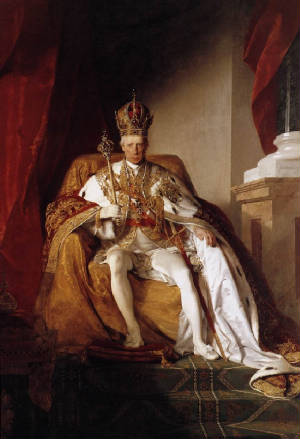 2b) Emperor FRANZ II Joseph Karl, who in 1806 abdicated as Holy Roman
Emperor and became Emperor FRANZ of Austria, (Florence 12 Feb 1768-Vienna 2 Mar 1835); m.1st Vienna 6 Jan 1788 Elisabeth Dss
of Württemberg (Treptow 21 Apr 1767-Vienna 18 Feb 1790); m.2d by proxy at Naples 15 Aug 1790 and in person at Vienna
19 Sep 1790 Maria Teresa Pss of Bourbon-Two Sicilies (Naples 6 Jun 1772-Vienna 13 Apr 1807); m.3d Vienna 6 Jan 1808 Maria
Ludowika Archdss of Austia-Este (Monza 14 Dec 1787-Verona 7 Apr 1816); m.4th by proxy at Munich 29 Oct 1816 and in person
at Vienna 10 Nov 1816 Caroline Auguste Pss of Bavaria (Mannheim 8 Feb 1792-Vienna 9 Feb 1873) 1c) Ludovika
Elisabeth Franziska (Vienna 18 Feb 1790-Vienna 24 Jun 1791) 2c) Marie Louise Leopoldine Franziska Theresia Josepha Lucia, Dss
of Parma, Piacenza and Guastalla 1814-1847 (Vienna 12 Dec 1791-Vienna 17 Dec 1847); m.1st by proxy at Vienna 11 Mar 1810 and
in person (civ) at St.Cloud 1 Apr 1810 (rel) at the Louvre 2 Apr 1810 Napoléon I, Emperor of the French (Ajaccio 15
Aug 1769-St.Helena 5 May 1821); m.2d Parma 7 Sep 1821 Adam Adalbert Gf von Neipperg (Vienna 8 Apr 1775-Parma 22 Feb 1829);
m.3d Parma 17 Feb 1834 Cte Charles de Bombelles (Versailles 6 Nov 1785- Versailles 30 May 1856) 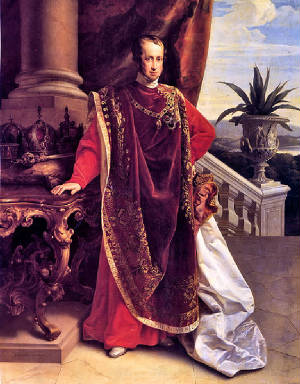 3c) FERDINAND I
Karl Leopold Joseph Franz Marcelin, Emperor of Austria from the death of his father until his abdication 2 Dec 1848 (Vienna
19 Apr 1793-Prague 29 Jun 1875); m.Vienna 27 Feb 1831 Maria Anna Pss of Savoy (Rome 19 Sep 1803-Prague 4 May 1884)
4c) Marie Caroline Leopoldine Franziska Theresia
Josepha Medarde (Vienna 8 Jun 1794-Vienna 16 Mar 1795)
5c) Caroline Ludovika Leopoldine (Vienna 9 Dec
1795-Schloß Hetzendorf 30 Jun 1799) 6c) Maria Leopoldina Josepha Caroline (Vienna 22 Jan 1797-Rio de Janeiro 11 Dec 1826); m.by proxy at Vienna 13 May
1817 and in person at Rio de Janeiro 5 Nov 1817 Pedro I, Emperor of Brazil [later, King Pedro IV of Portugal (Queluz 12 Oct
1798-Queluz 24 Sep 1834) 7c) Marie Clementine Franziska Josepha (Vienna 1 Mar 1798-Château de Chantilly 3 Sep 1881); m.Schönbrunn
28 Jul 1816 Leopoldo Pr of Bourbon-Two Sicilies, Pr di Salerno (Naples 2 Jul 1790-Naples 10 Mar 1851)
8c)
Joseph Franz Leopold (Vienna 9 Apr 1799-Laxenburg 30 Jun 1807) 9c) Marie Caroline Ferdinande Theresia Josephine Demetria (Vienna 8 Apr 1801-Dresden 22 May 1832); m.by proxy at
Vienna 26 Sep 1819 and in person at Dresden 7 Oct 1819 King Friedrich August II of Saxony (Dresden 18 May 1797-Brennbuchel
9 Aug 1854. 10c) Franz Karl Joseph (Vienna 7 Dec 1802-Vienna 8 Mar 1878); he renounced his succession rights 1848;
m.Vienna 4 Nov 1824 Sophie Pss of Bavaria (Munich 27 Jan 1805-Vienna 28 May 1872)  1d) FRANZ JOSEPH Karl,
Emperor of Austria 2 Dec 1848 (Schönbrunn 18 Aug 1830-Schönbrunn 21 Nov 1916); m.Vienna 24 Apr 1854 Elisabeth Dss
in Bavaria (Munich 24 Dec 1837-assassinated at Geneva 10 Sep 1898) . 1e)
Sophie Friederike Dorothea Maria Josepha (Vienna 5 Mar 1855-Buda 29 May 1857) 2e) Gisela Louise Marie (Laxenburg 12 Jul 1856-Munich 27 Jul 1932);
m.Vienna 20 Apr 1875 Leopold Pr of Bavaria (Munich 9 Feb 1846-Munich 28 Sep 1930) 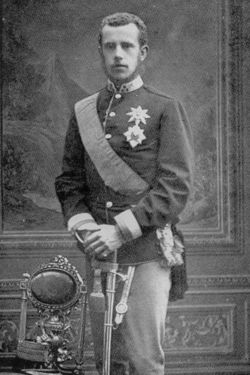
3e) Rudolf Franz Karl Joseph, Crown
Prince of Austria (Laxenburg 21 Aug 1858-committed suicide at Mayerling 30 Jan 1889); m.Vienna 10 May 1881 Stephanie Pss of
Belgium (Laeken 21 May 1864-Pannonhalma, Hungary 23 Aug 1945) 1f) Elisabeth Marie Henriette Stephanie Gisela (Laxenburg 2 Sep 1883- Vienna-Hütteldorf
22 Mar 1963); m.1st Vienna 23 Jan 1902 (div 1924) Otto Pr zu Windisch-Grätz (Graz 7 Oct 1873-Lugano 25 Dec 1952); m.2d
Vienna 4 May 1948 Leopold Petznek (Bruck an der Leitha 30 Jun 1881-Vienna 27 Jul 1956) 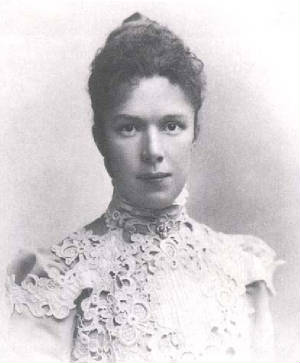 4e) Marie Valerie Mathilde Amalie (Buda 22 Apr 1868-Schloß Wallsee 6 Sep 1924); m.Ischl 31 Jul 1890 Franz Salvator
Archduke of Austria (Altmünster 21 Aug 1866-Vienna 20 Apr 1939) 2d) Ferdinand Maximilian, b.Vienna 6 Jul 1832, became Emperor Maximilian of Mexico 10 Apr
1864 but was ousted by revolutionaries and executed at Queretaro, Mexico 19 Jun 1867; m.Brussels 27 Jul 1857 Charlotte Pss
of Belgium (Laeken 7 Jun 1840-Château de Bouchout, Belgium 19 Jan 1927) 3d) Karl Ludwig (Schönbrunn 30 Jul 1833-Vienna 19 May 1896); m.1st Dresden 4 Nov 1856
Margaretha Pss of Saxony (Dresden 24 May 1840-Monza 15 Sep 1858); m.2d by proxy at Rome 16 Oct 1862 and in person at Venice
21 Oct 1862 Maria Annunciata Pss of Bourbon-Two Sicilies (Caserta 24 Mar 1843-Vienna 4 May 1871); m.3d Kleinheubach 23 Jul
1873 Maria Teresa Infanta of Portugal (Kleinheubach 24 Aug 1855-Vienna 12 Feb 1944) . 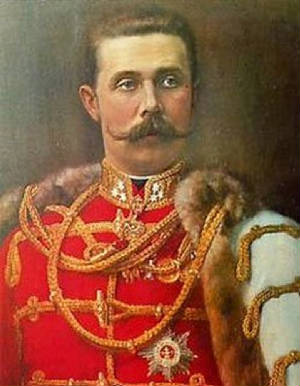 1e) Franz Ferdinand
Karl Ludwig Joseph, who became heir presumptive to the Imperial Throne on the death of his cousin, the Crown Prince Rudolf,
in 1889 (Graz 18 Dec 1863-assassinated at Sarajevo 28 Jun 1914); m.(morganatically) at Reichstadt, Bohemia 1 Jul 1900 Sophie
Gfn Chotek von Chotkowa, who was in 1905 cr Herzogin von Hohenberg (Durchlaucht) (Stuttgart 1 Mar 1868-assassinated at Sarajevo
28 Jun 1914); their issue bear the titles Fürst[in] von Hohenberg (Durchlaucht), except the head of the house, who is
Herzog von Hohenberg 1f) Sophie Marie Franziska Antonia Ignatia Alberta (Konopischt 24 Jul 1901-Thannhausen 27 Oct 1990);
m.Tetschen 8 Sep 1920 Friedrich Gf von Nostitz-Rieneck (Prague 1 Nov 1893-Graz 29 Dec 1973) see: Dukes of Hohenberg - House of Hohenberg 2e) Otto Franz Joseph Karl Ludwig Maria (Graz 21 Apr 1865-Vienna 1 Nov 1906); m.Dresden 2 Oct 1886 Maria Josepha
Pss of Saxony (Dresden 31 May 1867-Schloß Wildenwart, Upper Bavaria 28 May 1944) 1f) KARL, Emperor of Austria on the death of his great-uncle, Emperor Franz Josef, in 1916, until he fled
the country in 1918/9; b.Persenbeug 17 Aug 1887, d.Funchal, Madeira 1 Apr 1922; m.Schwarzau am Steinfelde 21 Oct 1911 Zita
Pss of Bourbon-Parma (Villa Pianore 9 May 1892-Zizers 14 Mar 1989)  1g) Franz Joseph OTTO Robert
Maria Anton Karl Max Heinrich Sixtus Xaver Felix Renatus Ludwig Gaetan Pius Ignatius, relinquished status as head of house
to his son Karl 2007 (Villa Wartholz bei Reichenau, Lower Austria 20 Nov 1912-Pöcking 4 Jul 2011); m.Nancy 10 May 1951
Regina Pss of Saxe-Meiningen (Würzburg 6 Jan 1925-Pöcking 3 Feb 2010) 1h)
Andrea Maria, b.Würzburg 30 May 1953; m.(civ) Pöcking, Upper Bavaria 9 Jul 1977 (rel) 30 Jul 1977 Karl Eugen Erbgf
von Neipperg (b.Schwaigern 20 Oct 1951) 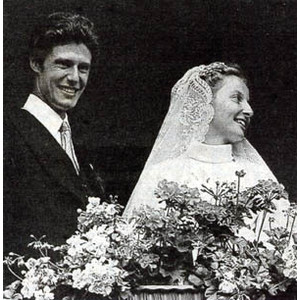 2h) Monika Maria Roberta Antonia Raphaela, b.Würzburg 13 Sep
1954; m.Pöcking 21 Jun 1980 Don Luis Gonzaga de Casanova-Cárdenas y Barón Duque de Santangelo Marqués
de Elche Cde de Lodosa (b.Madrid 24 Apr 1950) 3h) Michaela Maria Madeleine Kiliana Elisabeth, b.Würzburg 13 Sep 1954; m.1st (civ) 12 Jul 1982 (rel)
Anton, Panama 14 Jan 1984 (div 1993) Eric Alba Teran d'Antin (Mexico City 21 May 1920-New York 9 Jul 2004 [acc to internet
reports, not confirmed); m.2d 22 Oct 1994 (div 1998) Hubertus Gf von Kageneck (b.Haus Blumenscheidt bei Wittlich 10 Aug 1940) 4h) Gabriela Maria Charlotte Felicitas Elisabeth Antonia, b.Luxemburg 14 Oct 1956; m.(civ)
Pöcking 30 Aug 1978 (rel) St.Odile 5 Sep 1978 (div 1997) Christian Meister (b.Starnberg 1 Sep 1954) 5h) Walburga Maria Franziska Helene Elisabeth, b.Berg am Starnberger See 5 Oct 1958; m.Budapest
5 Dec 1992 Carl Axel Archibald Gf Douglas (b.Stockholm 27 Nov 1949) 6h) KARL Thomas Robert Maria
Franziskus Georg Bahnam, b.Starnberg 11 Jan 1961; m.Mariazell 31 Jan 1993 (civ) Salzburg 6 Feb 1993 Bss Francesca von Thyssen-Bornemisza
(b.Lausanne 7 Jun 1958) 1i) Eleonore Jelena Maria del Pilar Iona, b.Salzburg
28 Feb 1994
2i) Ferdinand Zvonimir Maria Balthus Keith Michal Otto
Antal Bahnam Leonhard, b.Salzburg 21 Jun 1997
3i) Gloria Maria
Bogdana Paloma Regina Fiona Gabriela, b.Salzburg 15 Oct 1999
|

